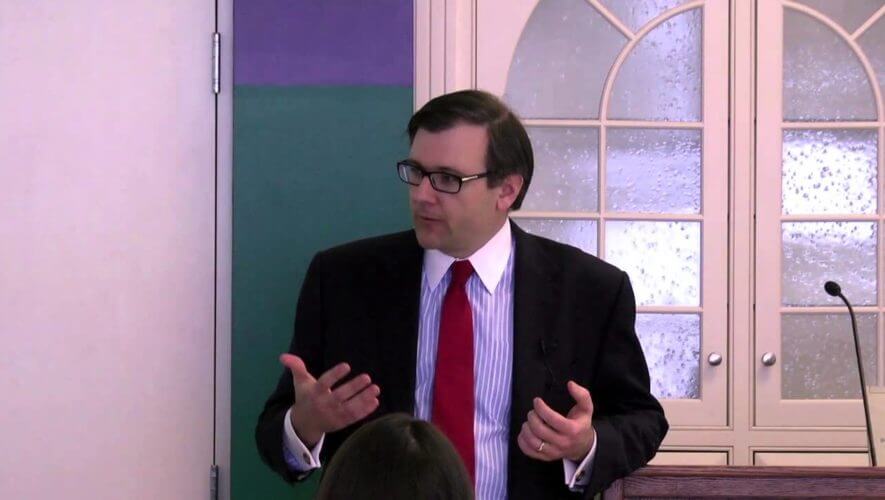Webster’s defines the word “scramble” as “to move with urgency or panic.” If you want to see a scramble in action, turn on any college football or NFL game and watch the quarterback try to elude several angry 325-pound defensive linemen.
While accounting and finance teams don’t have to worry about large, angry auditors chasing and tackling them during the year-end audit process (at least we hope not), many have to scramble to gather the necessary documentation and files, often housed in several different areas, to avoid being hassled by those inspecting the company’s books.
“Pulling all the information the auditors require, in the format they require it in, takes a lot of time,” said Jedannah Vieira, CPA, director of accounting operations at VSCO, an Oakland, Calif.-based art and technology company. “Auditors typically ask for hundreds of reports and data points. Some requests take five minutes to complete and send over; others take days or weeks to prepare.”
Complications to being audit-ready
Startups like VSCO are often at a disadvantage for larger projects because they have smaller accounting and finance teams. As a result, audit preparation requires advanced planning and additional man-hours.
“Complicated areas of accounting, like revenue recognition and stock-based compensation, require significant review of accounting policy and analysis, complicated estimates, and conclusions that align with U.S. GAAP and best practices,” Vieira said. “At VSCO, we hold ourselves to similarly high standards of reporting, but we need to be lean and efficient with the resources we have to manage and deliver exceptional results from our accounting practice.”
Another area in which Vieira’s team works hard to finish tasks ahead of time is the close and reconciliation process, which is an important piece of the year-end audit equation.
“We aim to take as much out of the financial statement close process as possible by front-loading work. We also aim to be smart about utilizing estimates so that we can close select accounts in the most efficient way possible,” she said.
Prior to Vieira joining VSCO’s finance team, the company did what many other organizations do: rely on an Excel checklist to document and manage the close process.
“Accounting teams have survived for too long without proper tools to manage the close process. Spreadsheet checklists are stop-gaps. Even in the best scenarios, they add more tedious work than create value. Time is incredibly limited in any finance team, small or large, so all efforts need to be focused on value creation,” Vieira said. “I felt strongly that we needed a smart way to track our close process on a monthly and yearly basis, and that as a team we all needed to have visibility into the status, completeness, and appropriateness of our close process.”
Checklist dilemma
More on VSCO in a bit. Let’s shift gears to another company that also was having a checklist dilemma, which hindered its close and audit readiness. Vets First Choice, a Portland, Maine-based provider of technology-enabled healthcare services for veterinary practices, has 12 contributors to the close process, some of which are located in different states, according to Reporting and Accounting Manager Kristen Parisien.
A comprehensive close checklist hadn’t been created; instead, some contributors created their own checklists, in various forms, that weren’t easily accessible. Others had no checklist at all.
“There was no consistency around where reconciliations or documents were saved, who completed them, who reviewed them, or when they were considered complete,” said Parisien, who is responsible for ERP administration, all closes and audits, and financial reporting at Vets First Choice. “It’s hard to manage when you have contributors in multiple locations, working on different networks and drives, and responsible for different tasks.”
While auditors didn’t have much difficulty getting the documents they needed, Parisien said, it was at the expense of staff members who put in extra time and effort to gather all the right documents, from the right places.
“Version control was always a struggle,” she added.
As a result, it took 14 days on average to close the company’s books each month and more than a month to close out the year.
“Numbers are constantly changing throughout the close, and if we are not in sync, things get missed, overlooked, or unaccounted for,” Parisien said. “We had to do something different since we are a rapidly growing company. We needed a simpler solution where everything is contained in one place.”
All for one, and one for all
That all-in-one solution ended up being close management software from FloQast, which Vets First Choice implemented in January 2016.
The result? Vets First Choice is down to a five-day month-end close and a seven-day year-end close.
“FloQast has streamlined our balance sheet reconciliation process, giving deadlines for each preparer and reviewer, while always ensuring those reconciliations tie to our ERP system,” Parisien said. “It’s so much easier to see what deadlines we’re bumping up against, and it’s constantly highlighting areas where we can be more efficient and who or what the bottlenecks are in the process. It also shows how well we complete our closes. These successes are important feedback for the contributors.”
“It has been important for me to condense the close and maximize productivity, while maintaining a high level of precision,” she added.
What about checklists? “FloQast provides a baseline checklist, and it was easy to add items and modify as we went through our first few closes. It was a great exercise to document everyone’s responsibilities,” Parisien said. “It also forces all of the contributors to be on their toes in completing and signing off on their checklist items and reconciliations.”
As mentioned earlier, Jedannah Vieira of VSCO was looking to add visibility into the close process. FloQast did just that, starting in the fourth quarter of 2016.
“It really helps leadership understand the quality and completeness of the monthly and yearly close processes. Without it, I would put in much more effort to have the same amount of visibility into the status of the close. I’d be meeting with the team daily to understand the status of items. We can now skip the status meetings and focus on getting the work done together,” she said. “It also allows me to participate in the process and document my monthly review and commentary. It also allows our team to demonstrate the rigor of our close process to auditors who want to review it. And finally, it helps all team members rally around the common goal with consistent information, which is energizing.”
In addition, FloQast provided Vieira a way to implement documented controls over the close process and reconciliations.
“Our operation is paperless, so we don’t retain paper accounting files with signature sign-offs. We also don’t have our own software or system to document internal controls. Because of these reasons, a tool like FloQast helps us efficiently and effectively document and validate processes and controls,” she said.
Learn strategies and best practices for automating and improving the month-end close process at your organization during this webinar presented by FloQast. You can read more about Going Concern’s partnership with FloQast here.
Image: iStock/stevanovicigor



